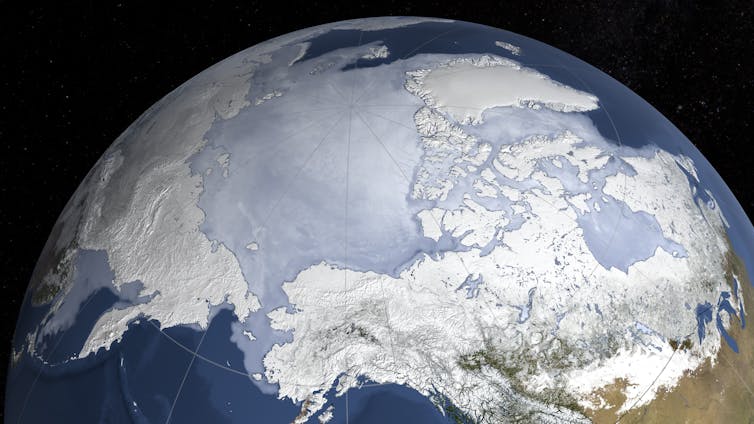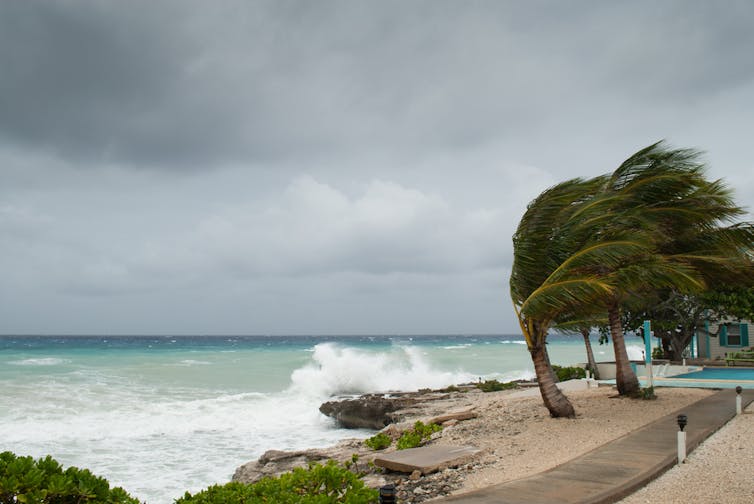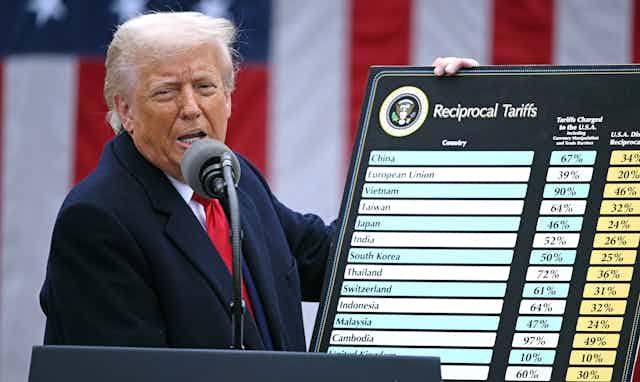
Keith Shine, University of Reading
The world’s climate scientists have spoken: if we want to limit human-induced global warming to 1.5℃ we probably can. But it will be tough, given where we’re starting from.
That’s the conclusion of a new report by the UN’s Intergovernmental Panel on Climate Change (IPCC). The focus on 1.5℃ is the result of years of international negotiation. Starting in 1994, a central aim of the UN’s climate change efforts (the Framework Convention on Climate Change, or UNFCCC) was to stabilise greenhouse gas concentrations at a level that would “prevent dangerous anthropogenic interference with the climate system”. Much was written on what this meant, particularly the word “dangerous”.
Negative impacts of climate change occur on a continuum, and defining a point at which climate change becomes dangerous is difficult and contentious. On the other hand, climate change negotiations are difficult without some target to work towards.
Fifteen years later, the UNFCCC’s Copenhagen Accord introduced a 2℃ target, and its 2015 Paris Agreement was even more specific: it “aims to strengthen the global response to the threat of climate change … by holding the increase in … temperature to well below 2℃ above pre-industrial levels and pursuing efforts to limit the … increase to 1.5℃”.
The IPCC provides scientific advice to the UNFCCC, which makes policy, and the IPCC itself has never stated a temperature target. It does however list climate change risks using five “reasons for concern”. These include impacts such as “unique and threatened ecosystems and cultures” (such as coral reefs) and “extreme weather events”, each of which is rated on a scale from “undetectable” to “very high”. The IPCC’s most recent (2014) Fifth Assessment of the scientific evidence found that at around 1.5℃ warming there was a transition from moderate to high risk for threatened ecosystems and cultures and for extreme weather events. Thus there is consistency between the Paris and IPCC assessments.

Drew McArthur/Shutterstock
The Paris Agreement asked the IPCC to report on the impacts of global warming of 1.5℃, and this new publication is the result. Its tone is not “we must avoid 1.5℃ warming”, as you might think from many commentators, but more “if we want to avoid 1.5℃ warming, this is what must be done”. The report contrasts the impact of 1.5℃ and 2℃ warmings, giving information on what would be gained by the extra effort needed to limit warming to 1.5℃.
As the IPCC’s reports are largely based on a critical assessment and synthesis of published scientific papers, many of its latest conclusions are unsurprising. There are many well recognised uncertainties in understanding climate change – for instance, even if we set a course aiming to hit 1.5℃ (which is mostly determined by future CO₂ emissions), we could end up hitting, say, 1℃ or 2℃ instead. The report provides uncertainty ranges in its estimates and confidence levels, based on expert judgement.
The new report tells us that human activity has already caused about 1℃ of global warming, while at the present rate of warming (0.2℃ per decade) we’ll hit 1.5℃ by about 2040. National pledges made as part of the Paris Agreement still mean we are on course for warming of about 3℃ by 2100, meaning four of the five “reasons for concern” would then be in the high to very-high risk category.
Achieving the 1.5℃ target will require anthropogenic CO₂ emissions to decline by 45% by 2030 (relative to 2010). By 2050, they will need to reach “net zero” – any further CO₂ emissions due to human activity would then have to be matched by deliberate removal of CO₂ already in the atmosphere, including by planting trees. Net zero would have to occur by around 2075 to meet a 2℃ target.

Somrerk Witthayanantw/Shutterstock
Many illustrations are given for the difference between 1.5℃ and 2℃ worlds. At 1.5℃, summertime Arctic sea ice is projected to disappear once per century, compared to once per decade at 2℃; 8% of plants that have been studied would lose half their climatically-suitable area, compared to 16%; sea level rise would be 10cm less (with 10m fewer people impacted at today’s population levels); and while coral reefs might decline by a further 80% at 1.5℃, they could virtually disappear at 2℃.
The report identifies various routes by which emissions cuts would limit warming to 1.5℃; each makes assumptions about future changes in, for example, economic strategy, population growth and the rate at which low carbon energy is adopted. The IPCC recognises the challenges are “unprecedented in scale” but notes, for example, “the feasibility of solar energy, wind energy and electricity storage mechanisms have substantially improved over the past few years”.
The report is sensitive to the fact that changes required to meet 1.5℃ must be consistent with the UN’s wider sustainable development goals. Limiting climate change will help meet goals associated with health, clean energy, cities and oceans. But there are potential negative impacts on others (poverty, hunger, water, energy access) “if not carefully managed”.
So where next? Of course, the conclusions will be widely debated at many levels, but eyes will be on the UNFCCC’s response at its next meeting, in Katowice, Poland, in early December.![]()
Keith Shine, Regius Professor of Meteorology and Climate Science, University of Reading
This article is republished from The Conversation under a Creative Commons license. Read the original article.




29 Comments
Pingback: bonanza178
Pingback: rich89bet
Pingback: เสาเข็มไมโครไพล์
Pingback: Hunter898
Pingback: ks
Pingback: lsm99live.com
Pingback: slot88 jp
Pingback: dk7
Pingback: https://kriko.blog/wp-includes/images/crystal/default/page4.html
Pingback: http://accesssanmiguel.com/go.php?item=1132&target=https://gg4.store/
Pingback: 10 เว็บ ซื้อ หวย บาทละ 100
Pingback: design my own cornhole board
Pingback: ทัวร์โรงงานจีน
Pingback: sunwin - cổng game bài đổi thưởng số 1
Pingback: Firearms For Sale
Pingback: Neon24 มีบริการเกมพนันออนไลน์อะไรให้เดิมพันบ้าง?
Pingback: ทำความรู้จัก ราคาพูล คืออะไร ?
Pingback: home gym equipment
Pingback: เล่นสล็อต ได้เงินทุกวัน เว็บตรง pantip
Pingback: รับจดทะเบียนบริษัท
Pingback: palfish
Pingback: n-ethylpentedrone kopen | buy 2mmc | 6 apb pellets | buy 5-mapb | deschloroketamine | 4-mpd (4-methylpentedrone) | 6 apb powder | 2-mmc pellets, 5-mapb | 2-mmc crystalline powder | 4bmc poeder | acheter 3-me-pcp | buy cathinonen | buy 6 apb powder |NEP N-
Pingback: Fulfillment
Pingback: เว็บสล็อตเว็บตรง
Pingback: pg168
Pingback: slot ค่ายใหญ่ครบวงจร
Pingback: ufa168
Pingback: ทดลองเล่นสล็อต PG168
Pingback: บ้านเดี่ยว